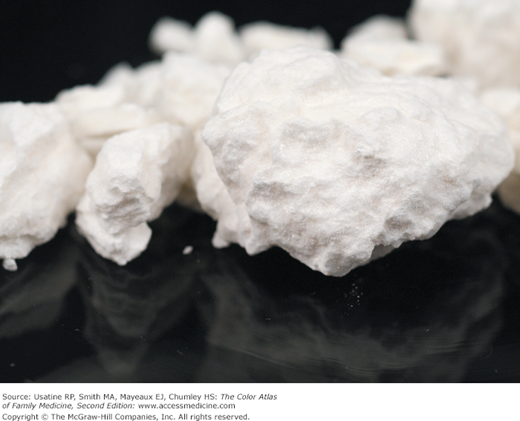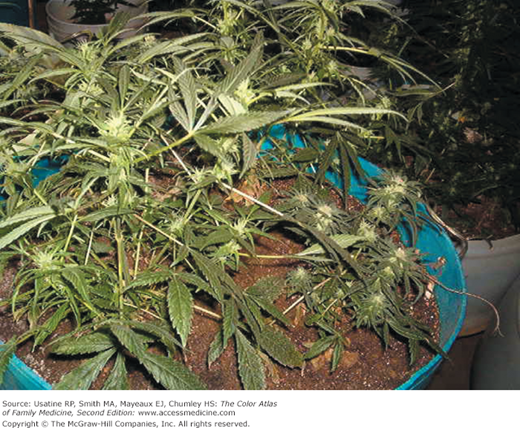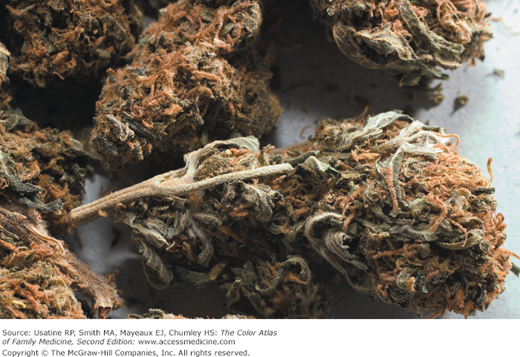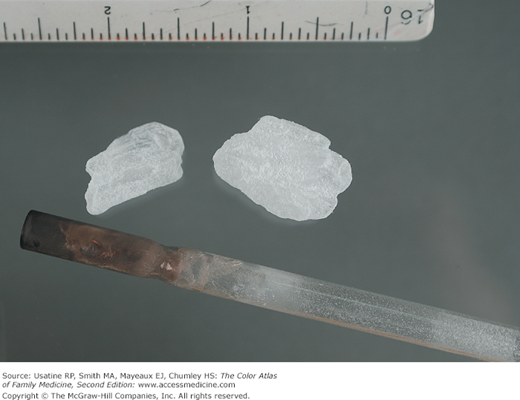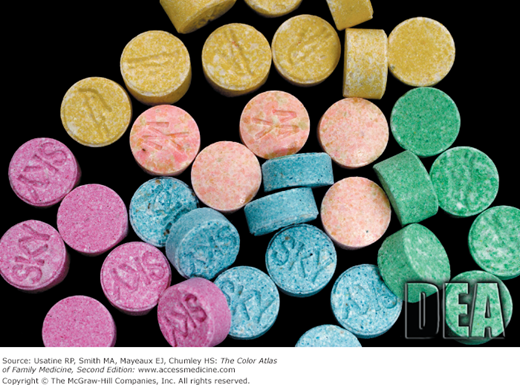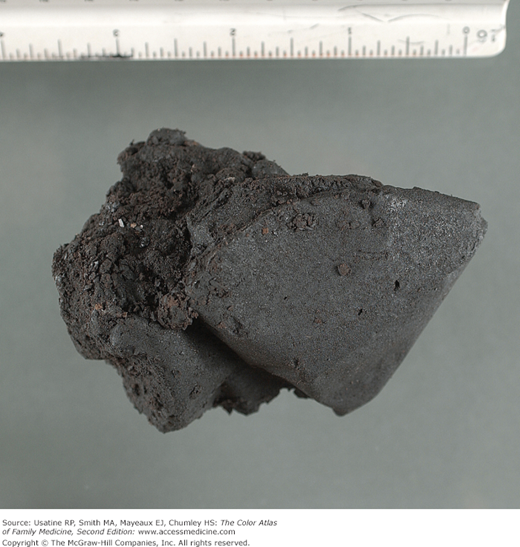Patient Story
A 21-year-old mother and her 4 children are being seen in a free clinic within a homeless shelter for various health reasons (Figure 235-1). The woman is currently clean and sober, but has a long history of cocaine use and addiction (Figure 235-2). Her children span the ages of 3 months to 5 years. She was recently living with her mother after the birth of her youngest child, but was kicked out of her mother’s home when she went out to use cocaine once again. The patient gave written consent to the photograph and when she was shown the image on the digital camera she noted how depressed she looked. She asked for us to tell the viewers of this photograph that these can be the consequences of drug abuse—being depressed, homeless, and a single mom.
Introduction
Addiction occurs when substance use has altered brain function to an extent that an individual loses a degree of control over his or her behaviors. Addiction is an epigenetic phenomenon. Many genes influence the brain functions that affect behavior and genetic variants. These genes differ in their susceptibility to environmental conditions, which trigger the changes in brain circuitry, and contribute to the development of addiction. Addiction must be recognized and treated as a chronic illness with an interprofessional team and social support.
Epidemiology
- An estimated 69.6 million Americans age 12 years or older were current users of a tobacco product in 2010. This represents 27.4% of the population in that age range. In addition, 58.3 million persons (23% of the population) were current cigarette smokers, 13.2 million (5.2%) smoked cigars, 8.9 million (3.5%) used smokeless tobacco, and 2.2 million (0.8%) smoked tobacco in pipes.1
- An estimated 22.6 million Americans age 12 years or older were current illicit drug users in 2010. This represents 8.9% of the population in that age range.1
- Marijuana was the most commonly used illicit drug (17.4 million users) (Figures 235-3 and 235-4). It was used by 76.8% of current illicit drug users. Among current illicit drug users, 60.1% used only marijuana, 16.7% used marijuana and another illicit drug, and the remaining 23.2% used only an illicit drug other than marijuana.1
- There were 1.5 million persons who were current cocaine users in 2010.1
- There were 353,000 persons who were current methamphetamine users in 2010 (Figure 235-5).1
- Hallucinogens were used by 1.2 million persons (0.5%) in 2010, including 695,000 (0.3%) who had used Ecstasy (Figure 235-6).1
- In 2010, 140,000 persons used heroin for the first time (Figure 235-7).1
- There were 9 million people age 12 years or older (3.6%) who were current users of illicit drugs other than marijuana in 2010. Most (7 million, 2.7%) used psychotherapeutic drugs (including prescription drugs) nonmedically. Of these, 5.1 million used pain relievers, 2.2 million used tranquilizers, 1.1 million used stimulants and 374,000 used sedatives.1
- Among persons who used pain relievers nonmedically in the past 12 months, 55% reported that the source of the drug the was from a friend or relative for free. Another 17.3% reported that they got the drug from a physician. Only 4.4% obtained the pain relievers from a drug dealer or other stranger, and only 0.4% reported buying the drug on the Internet.1
- In 2010, the rate of current illicit drug use was 8.5 times higher among youths age 12 to 17 years who smoked cigarettes in the past month (52.9%) than it was among youths who did not smoke cigarettes in the past month (6.2%).1
- Past month illicit drug use was also associated with the level of past month alcohol use. Among youths age 12 to 17 years in 2010 who were heavy drinkers (i.e., drank 5 or more drinks on the same occasion [i.e., at the same time or within a couple of hours] on each of 5 or more days in the past 30 days), 70.6% were also current illicit drug users, which was higher than among nondrinkers (5.1%).1

